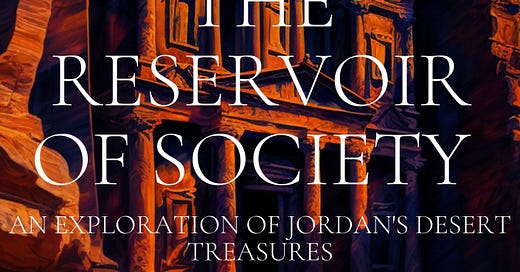The Paradox of Discovery (Paper 10)
Discovering archaeological sites which were never really lost
In 1812, the Swiss explorer Johann Ludwig Burckhardt arrived in Petra, Jordan dressed as a local and speaking Arabic. His short visit to the ancient city features heavily in his memoirs, and he has since become known as the Orientalist who “discovered” or “rediscovered” the city of Petra. But Petra, like many ancient sites in the Middle East, had never been truly lost.
This paradox highlights the glaring contradiction between the narrative that archaeological sites in the Middle East were somehow "discovered" by European explorers during the colonial period and the clear evidence that they had always been identified and known to regional residents and scholars.
The reality is that many of these sites had been known to the people living in the Middle East for centuries, if not a millennia. Local knowledge of these sites preserved their existence over millennia, playing an integral part of the cultural and historical memory of the region.
The arrival of European explorers as early as the 18th century largely shaped the narrative that we have of these sites today. The Europeans saw themselves as the "discoverers" of these ancient sites, and they often ignored or disregarded the contributions of the locals who long lived in and around these ancient sites. Even Burckhardt, whose memoirs serve as one of the first written accounts of Petra in Europe, notes in his writing that it was the opinion of the Greek Diocese of Jerusalem, which maintained an office in the nearby town of Karak, that the “dead city” which held the Tomb of Aaron (brother of Moses) to the south was the city of Petra.
This paradox of discovery highlights the power dynamics at play in the colonial period, when the Europeans sought to assert their dominance over the local populations by claiming to "discover" their cultural heritage. In doing so, they often ignored or belittled the knowledge and expertise of locals, without whom knowledge of these sites would not have been preserved.
Today, as western scholars continue to study and explore the ancient sites of the Middle East, it is imperative that the contributions of the local scholars and historians who have long kept alive the memory of these sites are recognized. We must acknowledge their expertise and insights, and work to build partnerships that respect their knowledge and expertise. Such rich debates, such as the connection of ancient Petra to traditions and storytelling in the biblical and quranic narratives, as outlined by scholars like Mehdy Shaddel, draw on these sources to spark new discoveries.
Ultimately, the paradox of discovery reminds us that knowledge is not created in a vacuum, but is always the product of cultural, social, and historical contexts. By recognizing the contributions of all those who have contributed to our understanding of these ancient sites, western scholars can build a more inclusive and respectful approach to the study and exploration of the past.
For more information on the historic debate over the ancient name of Petra, please see the following:
Shaddel, Mehdy, Studia Onomastica Coranica: al-Raqīm, Caput Nabataeaem, Journal of Semitic Studies, published in 2017.
A special thanks to Tabitha Sanders for her editorial support.







